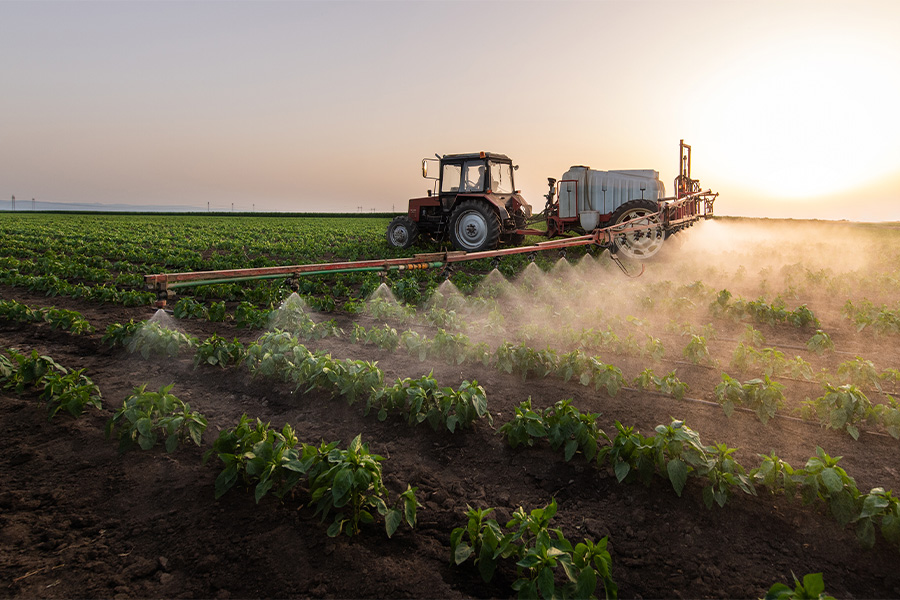Crop and Soil Sciences
-

Harvest losses can rob you of profit from grain and bean production. Harvest losses of 10 percent or more are not unusual, when they should be in the 2 to 4 percent range. If you do not check losses behind your combine, you have no idea what the losses are and where they occur during harvesting. The following procedure outlines how to measure losses during harvest. It also shows you where the losses occur. The grain or beans saved mean that much more profit saved.
Paul E. Sumner
|
-

C 1015
Peanut Response to Dicamba
The objective of this publication is to provide county agents, peanut growers, crop consultants, agri-business personnel, etc. with information that can assist them in making appropriate management decisions after a suspected dicamba drift/volatilization or sprayer contamination problem has occurred.
Timothy Lane Grey and Eric P. Prostko
|
-

In this report, analysis of data and results from previous studies are used to provide information concerning the peanut price support issue. This publication is provided for information purposes so that industry leaders may use it in their decision-making process.
Stanley M. Fletcher
|
-

This publication discusses tropic croton identification and control in cotton and peanut.
Stanley Culpepper and Eric P. Prostko
|
-

Eclipta is considered to be one of the world’s worst weeds. This publication discusses the identification and control of eclipta in peanut.
Eric P. Prostko
|
-

Most cases of groundwater contamination by agricultural chemicals have been caused by improper storage or mixing and loading chemicals. For this reason, agricultural chemical storage and handling practices have been targeted by federal and state legislation across the United States. To satisfy the proposed regulations, dealers and applicators are encouraged to construct safe chemical storage and mixing/loading facilities with secondary containment.
Paul E. Sumner and Gary L. Hawkins
|
-

Research shows that drip irrigation is highly beneficial to pecan trees in Georgia, even in wet years. This resource explains the benefits that drip irrigation offers.
Kerry A. Harrison
|
-

The UGA EASY (Evaporation-based Accumulator for Sprinkler-enhanced Yield) Pan Irrigation Scheduler is designed to provide in-field monitoring of crop water needs in humid areas for a fraction of the management time and cost associated with other irrigation scheduling methods. If a farmer is not currently using a more sophisticated irrigation scheduling method, this unit is a simplified, low cost alternative. The UGA EASY Pan Irrigation Scheduler is designed to help you keep track of when your next application is needed, so you can avoid applying too much or too little water. The overall goal is to be more efficient in the use of irrigation water.
Kerry A. Harrison and Wesley Porter
|
-

B 1158
Sprayer Nozzle Selection
Nozzle selection is one of the most important decisions to be made related to pesticide applications. The type of nozzle affects not only the amount of spray applied to a particular area, but also the uniformity of the applied spray, the coverage obtained on the sprayed surfaces, and the amount of drift that can occur. Each nozzle type has specific characteristics and capabilities and is designed for use under certain application conditions. This publication describes the types that are commonly used for ground application of agricultural chemicals, including flat-fan, even flat-fan and cone nozzle.
Paul E. Sumner
|